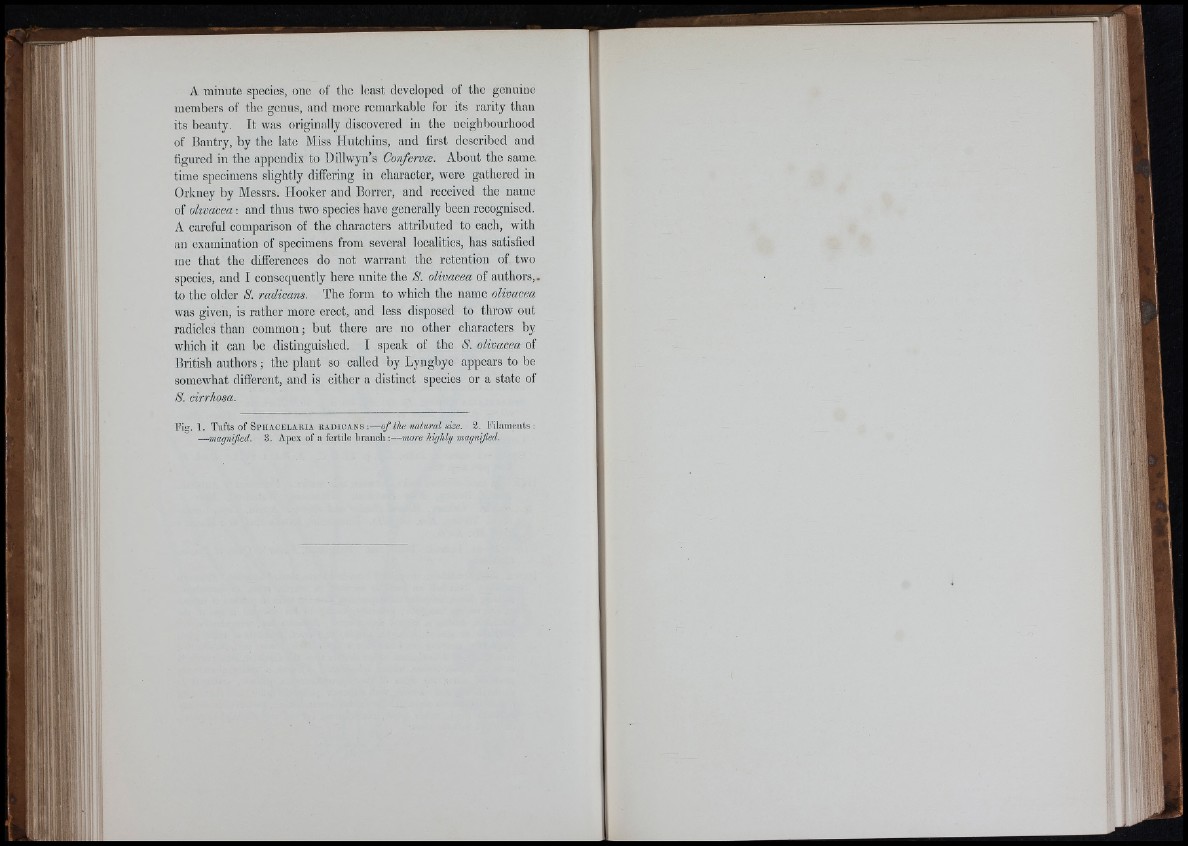
i l l
lí’ í
A miimtc species, one of the least developed of the genuine
members of the genus, and more remarkable for its rarity than
its beauty. It was originally discovered in tbe neighbourhood
of Bantry, by the late Miss Hutchins, and first described and
figured in tbe appendix to Dillwyn’s Conferva. About the same,
time specimens slightly differing in character, were gathered in
Orkney by Messrs. Hooker and Borrer, and received the name
of ohvacea; and thus two species have generally been recognised,
A careful comparison of the characters attributed to each, with
an examination of specimens from several localities, has satisfied
me that the differences do not warrant the retention of two
species, and I consequently hero unite the 8. olivácea of authors,,
to the older S. radicans. The form to which the name olivácea
was given, is rather more erect, and less disposed to throw out
radicles than common; but there arc no other characters by
which it can be distinguished. I speak of the 8. olivácea of
British authors; the plant so called by Lyngbye appears to be
somewhat different, and is either a distinct species or a state of
8. cirrhosa.
Fi<i. I. Tufts of S p i i a c b l a r i a U.AD10ANS ;— o f the naiural size. 2. Filaments:
—magnified. 3. Apex of a fertile b ra n c h :— more highly magnijied.
r! "■lmi
’T
f o i l
}